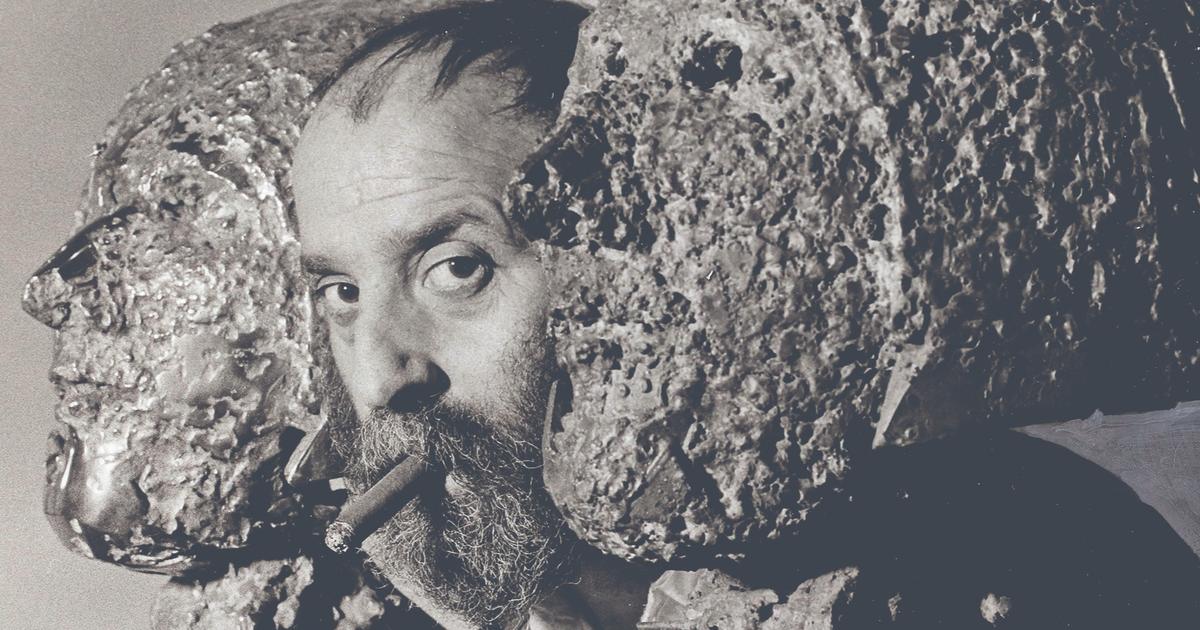Caesar, bearded like Charlemagne, with a medal-like profile, speaks without hesitation about his doubts, with that southern frankness which has made him legendary: “
And when I have certainty, I'm like idiots, I go for it!
Sometimes I was wrong.
Often, when I'm wrong, it's better than when I'm not wrong…
” César Baldaccini, known as César, was born on January 1, 1921 in Marseille.
He died well before reaching 100 years old, on December 6, 1998 in Paris.
Filmed on the occasion of his retrospective at the Center Pompidou, during the winter of 2017-2018, this beautiful documentary broadcast this evening on Le Figaro TV wants to give back to Caesar what belongs to Caesar.
This “alchemist of matter” whose Compressions mark the ultimate point of no return of an object that has become a work.
His sculptor's reflection appears on the gilded bronze of his famous Thumb, which was shaped by Régis Bocquel's foundry in Normandy and which he polished like an artisan.
Caesar, the eternal.
Here he is young, dark, mustachioed like a pre-war Republican guard who recounts his childhood in Belle-de-Mai, “a
cosmopolitan neighborhood where there are Italians, Corsicans, Spaniards
”
To discover
TV tonight: our selection of the day
In the kingdom of iron
“
My father is the César de Pagnol, he’s Raimu.
Like the guys who cut stones in cemeteries, he’s a sculptor
,” he says, emphasizing the syllables.
At 12, he left school to help his father, and was in turn a cooper, a mason, and a delivery driver.
In 1938, he began taking evening drawing and modeling classes.
In 1943, he went to Paris and enrolled in the Beaux-Arts, above all, to escape the STO in Germany.
He remained a student there for almost fifteen years!
The assurance of having a room and meal vouchers for this destitute who will always keep a keen sense of the system D. Rosine Baldaccini, his wife, recounts their meeting in 1948 in the Beaux-Arts courtyard: “
A very extraordinary character , exceptional, very eloquent, I had never seen that, he had a passion for the human body
.
» “
When I was young, I thought I was going to become a sculptor like Michelangelo and Maillol.
A sculptor, originally, is a man who mainly touches clay
,” said Caesar at the height of his glory.
Lacking money to make casts, he looked for a solid material, inventing it from intertwined and struck iron wire.
In 1954, he set up his workshop in Villetaneuse, in the factory of a friend's father.
He works there as a blacksmith.
It draws on the metal waste scattered in this northern suburb of Paris.
He flourished in the kingdom of iron and machines.
“
He finds a certain poetry in these forgotten, recycled materials, he will incorporate metal pieces found in the factory in his sculptures, an element of a car in a little chicken
,” analyzes Stéphanie Busuttil-Janssen, president of the César Foundation and his last companion, emphasizing “
her very Mediterranean imagination
”.
First success in 1954
His Poisson, a piece of metalwork both rough and openwork, earned his first success at César in 1954. He was 33 years old.
Picasso comes in person and congratulates him.
After many lean years, he became the fashionable sculptor, a personality from Montparnasse whose fame reached London and Brussels.
Here he is on display at the young Galerie Claude Bernard.
The architect Jean Nouvel speaks about it with respect.
Bernard Blistène, then director of the National Museum of Modern Art, as a scholar.
The pen of Art Press, Catherine Millet, in transgression which celebrates "
the touch who caressed his sculptures, the man who loved to grope women and by whom women loved to be groped
".
A question of imagination, says the artist.
“
When I touch things, I can dream.
» Another era!
From Irons welded to Plates born from the wings of his characters, from Compressions to Expansions, from the Venice Biennale (1956) to the César cinema trophy (1976), his journey is tenacious.
His winning smile bravely erases all the efforts made in this fight.

